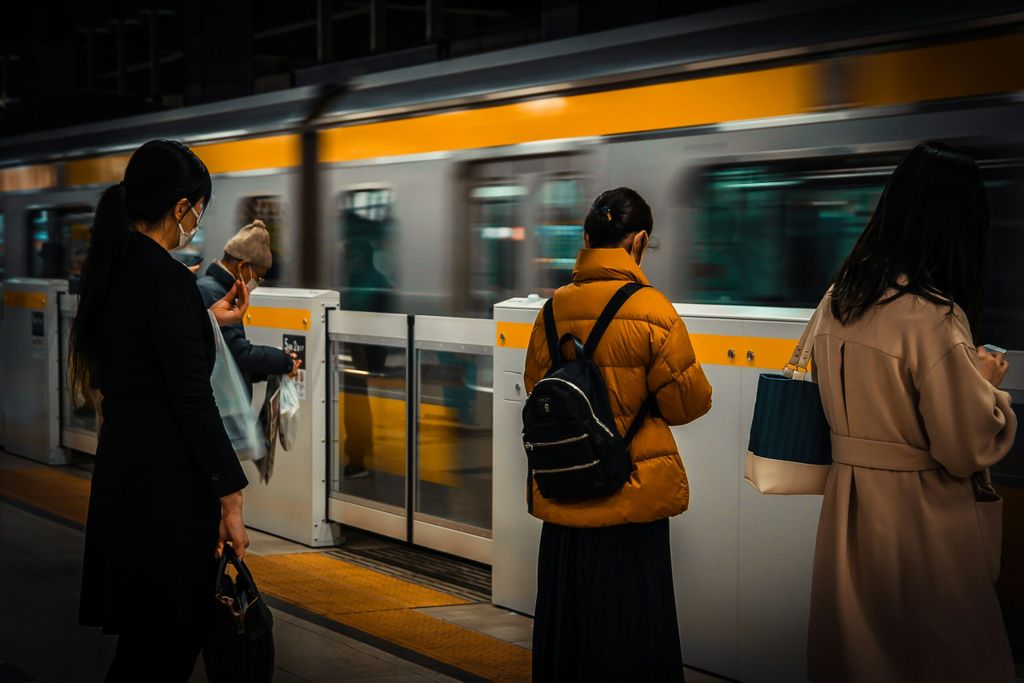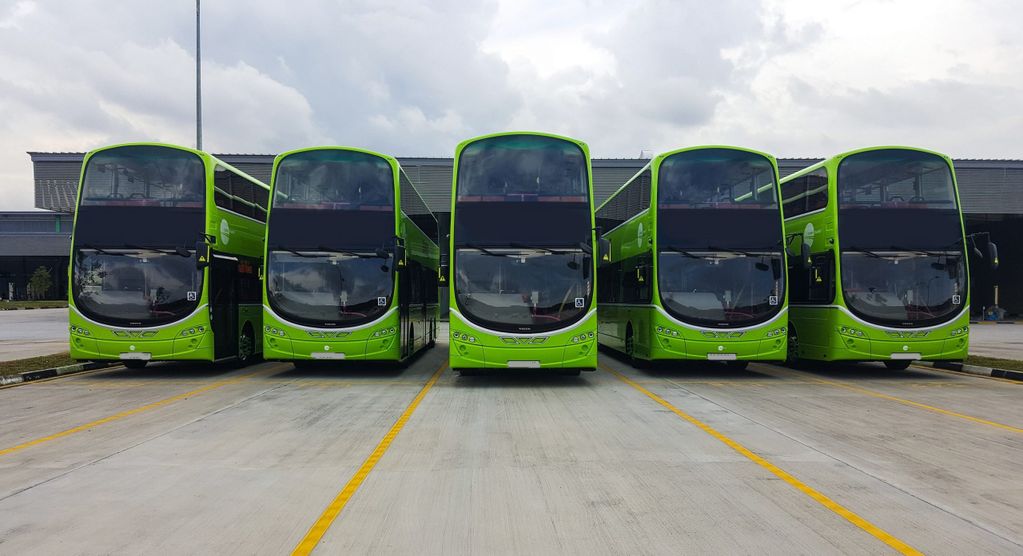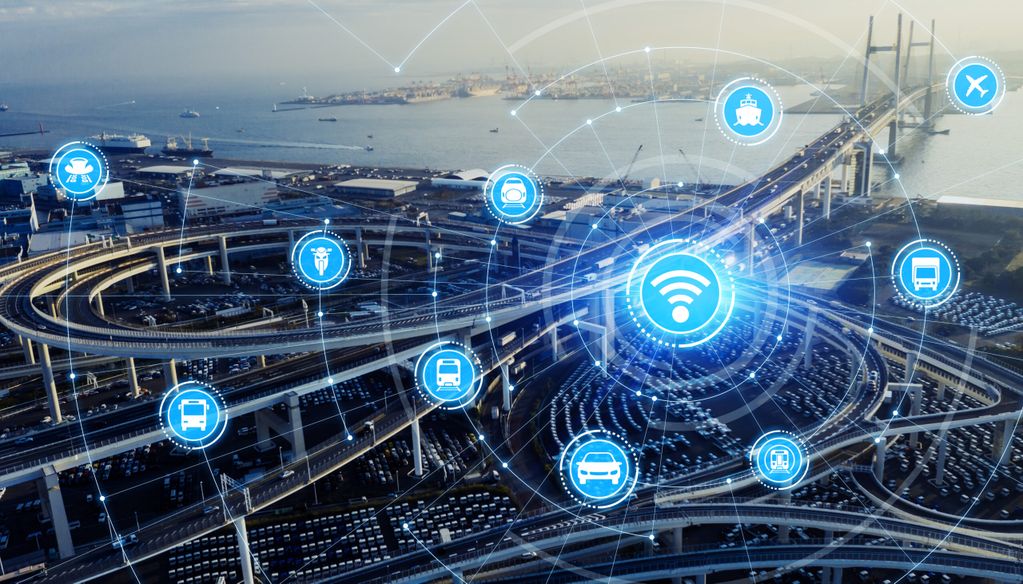
IT-TRANS 2022 speakers share their thoughts...Paola Cossu of FIT Consulting, Italy
Our Speaker Series continues
Have you always wanted to know more about the speakers whose expertise guides the conversation at our international events?
As we approach our time in Karlsruhe for the eighth edition of IT-TRANS, you’ll have that opportunity as we sit down with our Conference speakers to gather their thoughts on our 2022 key topics and themes.
As well as letting us know what the audience can expect from their session, we’re having a conversation about their career, thoughts on public transport, and life in and out of the sector.
So before we welcome the world of urban mobility to discuss what’s next for I.T. and digitalisation in public transport, we’re inviting another IT-TRANS speaker to the interview stage.
Up first, we met Guillaume Gibon, CEO of CITiO in Paris, France. Now it’s time to meet the next speaker in our exclusive interview series!
Paola Cossu, CEO of FIT Consulting
Q: Paola, as CEO of FIT Consulting, you have more than 25 years of experience in research and innovation within urban mobility and planning. Can you tell our readers a little about your career so far? What brought you to this stage?
My professional path has been facilitated by my background in statistics. The warmup of my career in the mobility world was mainly composed of engineers, and sometimes, economists. In 1998, statisticians had a different perspective, that at that time the sector considered as unexplored but complementary. That was a chance for me. Two European research projects in the 4th Research Framework Programme of the EU Commission were my first professional milestones. One project was on logistics and another one on passengers. This helped me a lot in gaining knowledge on both sectors. My turning point was in 2001 when I coordinated my first EU-funded project. The project was funded by the EU Commission Information Society and dealing, for the first time, with urban logistics when mobility of goods was still neglected in Europe. The project, called “MOSCA”, was then pioneering the sector, anticipating needs and trends, now greatly recognised as consolidated business and public-related streams. That project was followed by several EU projects as coordinator or partner. The great privilege I have had was the opportunity to travel and share contents and ideas with people in different cultures and skills. In parallel, if I can speak about my secret of success as a shareholder, it is the willingness to anticipate market needs and trends, and to set criteria for assessing and evaluating strengths and weaknesses – and to also learn lessons.
I was made CEO of the company in 2003 and that was a terrific challenge that I gained when I was young. I am still curious, critical, ambitious, full of doubts but with very few pillars: to be open minded and use all of my efforts in being competitive with myself and not with other people. We must give everyone a chance, and the mobility sector, as a key strategic market, offers a wide range of opportunities, where cooperation and sharing are the key success factors.
Q: At FIT Consulting you speak about innovating using a multidisciplinary approach by ‘teaming up’ to generate solutions. What are the main missions of FIT?
Fit, since its early stages, is oriented to take care of ‘People & Planet’, conceived as primary, outstanding, and precious resources in our ecosystem. For this reason, we leverage innovation to be addressed to sustainable growth, with the ambition of leaving a liveable world to future generations. Our company is composed of a cohesive and complementary team, where diversity is a value. Training, spirit of cooperation, sharing knowledge, openness, continual growth, trust, ethics, resilience, are all foundations principles. Human capital is at our core, and this driver always redresses values to our clients and partners, both at national and European levels. Research and innovation are means to reach sustainable growth and to increase quality and specialisation of our services and products for mobility of people and goods. For us, technology is an enabler for accelerating transformation of challenges into equal and shared values for all and create new generation of talents.
Q: The pandemic has disrupted our ability to share ideas and discussions in person during these past two years. Coming together in Karlsruhe feels like a milestone moment. Are you looking forward to the event?
As an optimist, I think that Covid-19 is an opportunity for the sector. We have a great chance to upgrade strategic dialogue moving to greener cities, effective operations, and a low carbon economy. Covid-19 has forced us towards more resilient behaviours. The pre-Covid value proposition for “sharing” was completely different from the new one. Before the pandemic, “sharing” principles were considered as an unprecedented and disruptive trend, especially in mobility, generating significant societal and economic impacts. Before Covid, sharing was hanging paradigms in everyday life, also offering great chances for enhancing cooperation and efficient business and societal models. The pandemic raised big concerns about the benefits and sustainability of sharing assets.
During these last two years we have lived an experience that changed us permanently. We confused physical distancing with social distancing, leading to risks of isolation and a sense of loneliness. People’s relationships and interactions should be encouraged and stimulated. However, digitalisation had a “mitigation role” in reducing negative impacts of having virtual meetings only, undoubtedly so different from physical meetings, maintaining meaningful social relationships even during an extreme situation, reducing the digital divide. Now we finally are in a ‘new normal’ and entering in to a more positive horizon. For sure I am looking forward taking the opportunity of this event to start redressing priorities, rediscovering benefits of empathy, trust, sharing of new ideas and opinions, fostering new cooperation and good feelings, being the ‘green fuel’ for future sustainable development.
Q: You are due to speak in our Workshop on new mobility and urban space. We know that building more optimal space will bring us more liveable cities. What do you hope the session will achieve?
The pandemic has put unprecedented pressure on urban space, as dynamic travel increased dramatically, creating new need to guarantee mobility happens safely, sustainably, and efficiently. The digital challenge is seeking to enable city managers to look at intelligent strategies and solutions, to develop a solid basis for the next generations’ success. Urban planners have the potential to release more street space for pedestrians, cyclists, micro-mobility, shared mobility, and delivery, and to move to greener and smarter cities, giving a positive impulse to local economies and to reach low carbon cities in Europe.
In the early days of pandemic, the discussion was about widening sidewalks and pedestrian crossings to meet social distancing. Now, the discussion is on potentials for streets to be re-designed meeting needs besides social distancing. The increased demand for curb space calls for re-visiting conventional parking, matching new delivery needs and free space for pedestrians. The curb zone located between streets and sidewalks can be the newest real estate, an important asset to reduce congestion, double parking and increase inclusion and environmental goals, with potentials to generate revenue opportunities for cities and business.
Talking about micro-mobility and sharing activities, you know they were booming before the pandemic, and their widespread adoption was also leading to major disputes over space on sidewalks, curbs, parks, and other urban places. Such devices have been struggling for space on the streets, competing with pedestrians, bikes and motorised vehicles. As type of individual transport, such smaller devices might be welcome in a post-pandemic world and could benefit from street re-designs that allow for wider sidewalks or enlarged cycling lanes.
Optimal use of public and private spaces are therefore new normal opportunities for cities, having the potential to be converted for sustainable purposes.
All these practices prove the added value of flexible and mixed use of urban space. The value of such spaces may push toward new challenging governance, fostering collaboration and co-design culture, strengthening relationships and trust among public authorities and private companies supporting the development of city – as-service, matching current demand needs, but also anticipating effects of new disruptive trends.
Q: And finally, is there a development in the world of innovation that interests you most? What do you think the future of mobility be focused on?
Permanent transformations will still require changes in personal habits, policies, incentives, and infrastructures. Planners may consider tracking how these experiments have influenced the views and opinions of residents or changed the perceived political feasibility of these initiatives among decision makers. Forward-looking cities and mobility industry should reinforce collaboration, co-designing, promoting, and sharing data-driven solutions and optimise public spaces use, to align conflicting individual interests, increasing efficiency of the everyday mobility sector and the quality of city life. Increasing user experience and find effective people-oriented solutions will imply better understanding of priorities and consideration of new demand.
Mobility hubs, for example, are innovative concepts of dedicated equipped place where a set of green and efficient transport modes are co-located in close proximity, providing several benefits to society being not just simple slot where to park a bike and rent an electric vehicle. Mobility hubs bring together public transport, as the backbone of urban mobility, shared options and active travel modes in a way that improves public realm.
The future of mobility should comprise call for actions to raise awareness on new financing opportunities, including revenue streams from Urban Vehicles Access Regulations, establishing new models of collaboration with private operators and encourage use of sustainable/green financing schemes. It is also relevant to create tools and paths to increase capacity and knowledge on data and use of new technologies, such as Digital Twin and Artificial Intelligence. Digital Twins are being rapidly developed, and it can integrate different digital aspects of cities for a better decision-making process and urban mobility planning at municipalities and regions and keep distances from fossil fuel transport.
Thank you to Paola for her time and contribution to our interview series…stay tuned for more from our speakers next week!
Join us in Karlsruhe to hear from Paola and her fellow speakers live
Meet IT-TRANS keynote: futurist, author and filmmaker Gerd Leonhard







